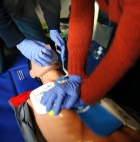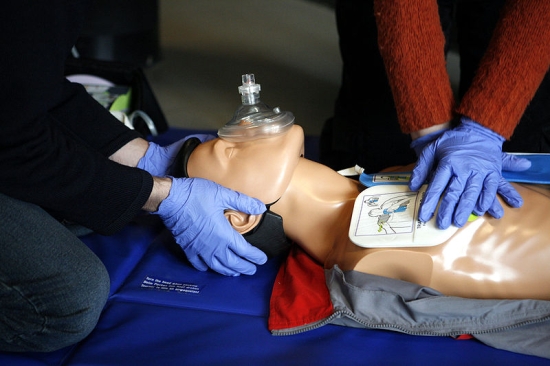Cardiac arrest: Residents of 5 Denver neighborhoods most likely to suffer
The statistics are heartbreaking. In five Denver neighborhoods -- Baker, Westwood, Whittier, Villa Park and Valverde -- residents are several times more likely to experience cardiac arrests than anywhere else in the city.
Wikimiedia.
Worse, locals who had heart attacks in three of the five communities during two recent years didn't receive CPR from by-standers. Their death rate was 100 percent.
These figures, analyzed by University of Colorado Denver emergency medicine professor Comilla Sasson, form the basis of a grassroots program to counter the repercussions of these attacks with education.
Sasson, who moved to Denver two years ago from Michigan to begin her research, has long been interested in the disparity of health quality and education between races and geographic areas. Each year, 300,000 Americans die from cardiac arrests that occur outside hospitals. Working in emergency rooms day after day, Sasson noticed that certain communities, particularly those that were predominantly Latino or African-American, did not report CPR and other treatments nearly as often as did their surrounding neighborhoods.
"It really doesn't matter where you live as much as where you drop," Sasson says. "It's amazing to me how neighborhoods right next to each other can have this incredible disparity as far as the likelihood of someone stopping to help you, even."
Wikimedia
So two years ago, she and associates at the University of Colorado Denver began to brainstorm a practical approach to the issue and founded HANDDS, High Arrest Neighborhoods to Decrease Disparities in Survival, to combat the problem. After analyzing 2009-2010 data provided by the Centers for Disease Control, they whittled the Denver area down to the statistics above. By comparing the city's average number of cardiac arrests and CPR responses to its individual neighborhoods, they concluded early on that five stood out as danger zones.
In Denver, for instance, 21 percent of all people who suffer a cardiac receive CPR from bystanders. But in four out of the five aforementioned neighborhoods, not a single resident was aided by CPR. In the fifth, Villa Park, only one person was.
While Sasson is currently working to incorporate 2011 data into her analysis, she recently concluded a series of focus groups intended to determine the reasons behind the disparity. With $30,000 provided by the University of Colorado Denver Clinical and Translational Sciences Institute, Sasson interviewed 64 people across the neighborhoods to understand the differences in resources and responses, many of which stemmed from cultural fears, language barriers and concerns about being sued for incorrect CPR procedure. (In Colorado, Good Samaritan laws protect the public from this happening.) Last week, she returned the results to the community with a lecture on how to move forward from here.
"It's getting rid of a lot of people's misconceptions that they have to have a car to get CPR," Sasson says. "If you call 911, the cops might come to your house, but they're not going to arrest you or ask for papers. And with hands-only CPR, you don't have to put your mouth on someone else's anymore."
Since 2008, the American Heart Association has approved the use of hands-only CPR on adults (though kids still require the breathing portion), but this knowledge was new to most people Sasson interviewed. To push Denver residents past their fears and stereotypes, HANDDS has partnered with the American Red Cross and the American Heart Association to launch a series of neighborhood festivals and CPR training events throughout the summer, starting with a scavenger hunt at the Heart and Stroke Walk on June 2.
Based on the Denver program's success, researchers and health professionals in San Diego, Columbus, Houston and Austin have asked Sasson for assistance launching their own analysis. "To me, this is the future of public health planning," Sasson says. "Instead of blanketing the entire city, why not focus it on the neighborhood where the skill is needed the most? Why not work from within?"
More from our Education archive: "Test cheating? DPS asks state to review state test scores at two schools for possible cheating."



































